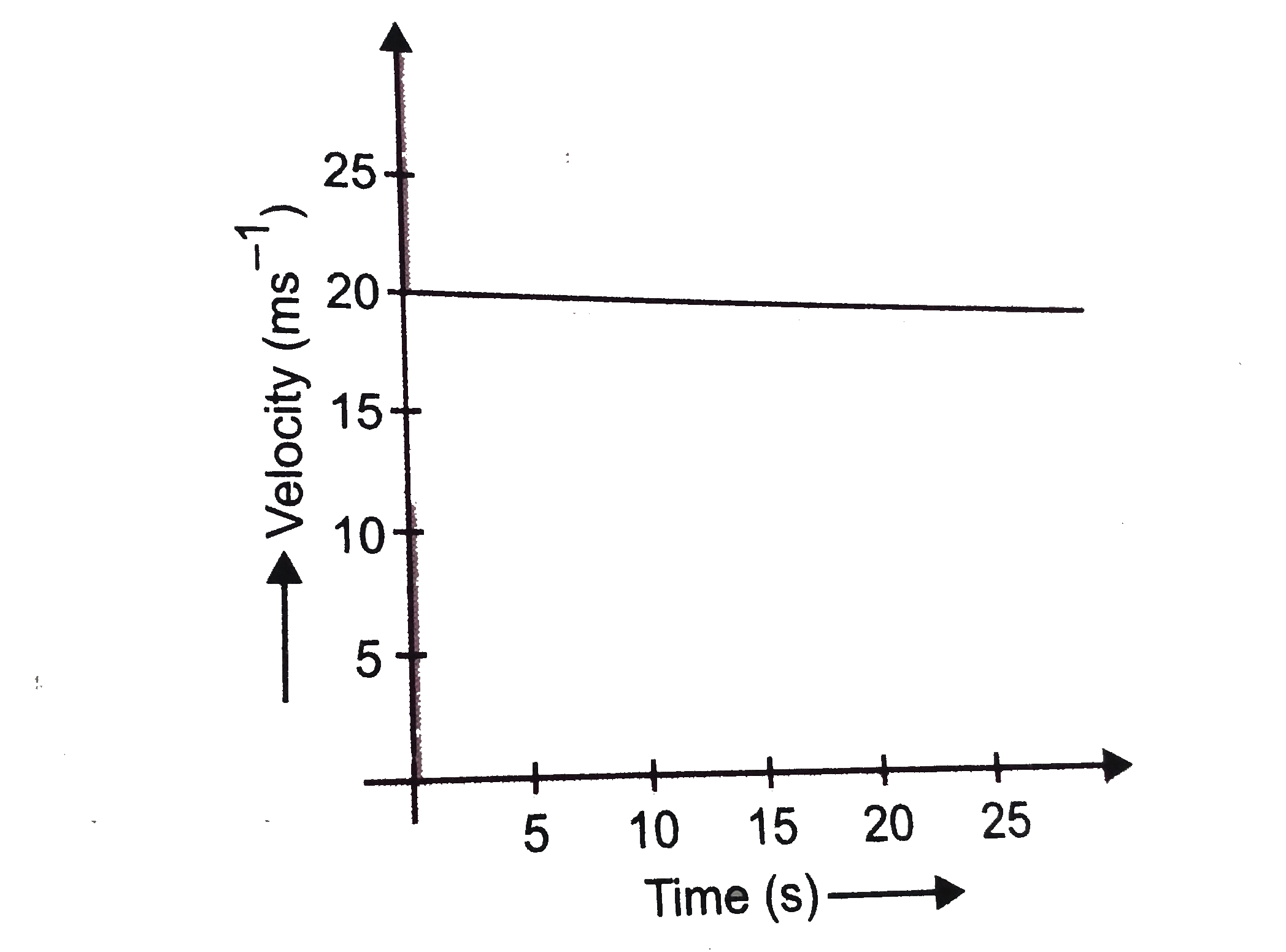A car acquires a velocity of 72 km h−1 In 10 s starting from rest. Calculate :
(i) the acceleration,
(ii) the average velocity, and
(iii) the distance travelled in this time.
To solve the problem step by step, we will calculate the acceleration, average velocity, and distance traveled by the car.
Given Data:
- Initial velocity (u) = 0 m/s (since the car starts from rest)
- Final velocity (v) = 72 km/h
- Time (t) = 10 s
Step 1: Convert Final Velocity to m/s
First, we need to convert the final velocity from km/h to m/s.
v=72 km/h=72×1000 m3600 s=72×518=20 m/s
Step 2: Calculate Acceleration
Acceleration (a) can be calculated using the formula:
a=v−ut
Substituting the known values:
a=20 m/s−0 m/s10 s=20 m/s10 s=2 m/s2
Step 3: Calculate Average Velocity
Average velocity (v_avg) can be calculated using the formula:
vavg=u+v2
Substituting the known values:
vavg=0 m/s+20 m/s2=20 m/s2=10 m/s
Step 4: Calculate Distance Travelled
Distance (s) can be calculated using the formula:
s=vavg×t
Substituting the known values:
s=10 m/s×10 s=100 m
Alternatively, we can use the second equation of motion:
s=ut+12at2
Substituting the known values:
s=0+12×2 m/s2×(10 s)2=0+1×100=100 m
Final Answers:
(i) Acceleration = 2 m/s²
(ii) Average Velocity = 10 m/s
(iii) Distance Travelled = 100 m
---
- Initial velocity (u) = 0 m/s (since the car starts from rest)
- Final velocity (v) = 72 km/h
- Time (t) = 10 s
First, we need to convert the final velocity from km/h to m/s.
Acceleration (a) can be calculated using the formula:
Average velocity (v_avg) can be calculated using the formula:
Distance (s) can be calculated using the formula:
(i) Acceleration = 2 m/s²
(ii) Average Velocity = 10 m/s
(iii) Distance Travelled = 100 m
Topper's Solved these Questions
- BOOK - ICSECHAPTER - MOTION IN ONE DIMENSION EXERCISE - EXERCISE -2 (A)28videos
MOTION IN ONE DIMENSION
- BOOK - ICSECHAPTER - MOTION IN ONE DIMENSION EXERCISE - EXERCISE -2 (A) ( Multiple choice type: )5videos
MOTION IN ONE DIMENSION
- BOOK - ICSECHAPTER - MEASUREMENTS AND EXPERIMENTATION EXERCISE - TOPIC 2 SIMPLE PENDULUM (4 Marks Questions )1videos
MEASUREMENTS AND EXPERIMENTATION
- BOOK - ICSECHAPTER - PRESSURE IN FLUIDS AND ATMOSPHERIC PRESSUREEXERCISE - Exercise -4(B)Numericals5videos
PRESSURE IN FLUIDS AND ATMOSPHERIC PRESSURE
Similar Questions
A car starting from rest acquires a velocity of 54kmh−1 min 20 s.
Calculate the acceleration of the car in S.I. unit.View SolutionA train starting from rest attains a velocity of 72km/h in 5 minutes . Assuming that the acceleration is uniform , find (i) the acceleration and (ii) the distance travelled by the train for attaining this velocity .
View SolutionThe velocity-time graph shows the motion of a cyclist. Find (i) its acceleration (ii) its velocity and (iii) the distance covered by the cyclist in 15 seconds.
 View Solution
View SolutionA car travels a distance 50 km with a velocity 25 km h−1 and then 60 km with a velocity 20 km h−1 in the same direction. Calculate : (i) the total time of journey and (ii) the average velocity of the car.
View SolutionA body, initially at rest, starts moving with a constant acceleration 2 ms−2. Calculate : (i) the velocity acquired and (ii) the distance travelled in 5 s.
View SolutionA car of mass 1000kg accelerates uniformly from rest to a velocity of 54km/h in 5 seconds. Calculate (i) its acceleration (ii) its gain in KE (iii) average power of the engine during this period.
View SolutionA car accelerates uniformly from 18km/h to 36km/h in 5 second. Calculate (i) the acceleration and (ii) the distance covered by the car in that time .
View SolutionA particle starts from rest with constant acceleration. The ratio of space-average velocity to the time average velocity is :-
View SolutionA bus starting from rest moves with a uniform acceleration of 0.1m/s2 for 2 minutes. Find
(a) the speed acquired, (b) the distance travelled.View SolutionA body starting from rest has an acceleration of 5m/s2. Calculate the distance travelled by it in 4th second.
View Solution

